DoABarrelRoll
Novice
F-Zero: An Odyssey in 16-Bits
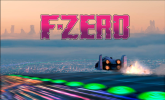
Let's explore the origins of a 16-bit classic, one of the launch games for the Super Nintendo, the great F-Zero, getting to know its influences, development, and its legacy.
The game utilized Mode 7 technology, a technique that allowed real-time rotation and scaling of backgrounds, creating an unprecedented sense of depth and three-dimensionality in racing games of that era. Many games in the SNES catalog used this technology, such as Axelay - with effects like flying over a globe and enemies in the background; Pilot Wings - soaring to dizzying heights, and Mario Kart, which originated from an attempt to create a multiplayer F-Zero, but due to the impossibility of maintaining a split screen with the same speed as F-Zero, gave birth to another franchise.
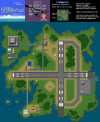
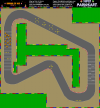
In the 1990s, Nintendo sought to innovate with the Super Nintendo (SNES). Director Isshin Shimizu was creating a sequel to the game Famicom Grand Prix: F1 Race, but the game received heavy criticism, being deemed uninteresting and unsellable. This motivated Shimizu to create something truly impressive. While traveling to the United States, he drew inspiration from Batman comics, which were popular due to the 1989 film directed by Tim Burton, as well as movies like "Blade Runner" and "Tron".


Upon returning to Japan, Shimizu found Yasunari Nishida, who was experimenting with the "Mode 7" function of the Super Famicom, allowing real-time rotation and scaling of graphics. Shimizu was impressed with the technology and began creating a racing game using this functionality.
Thus, the idea for F-Zero was born. Set in 2560, the game was released in November 1990 and impressed players with innovative graphics and an immersive soundtrack. The vision for F-Zero was to create something entirely unique, with intergalactic races in alien landscapes and anti-gravity vehicles. The choice of a futuristic setting allowed the team to explore imaginative designs inspired by science fiction and advanced technology.
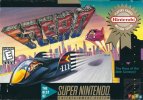

Development and Creative Team
The development of F-Zero was led by Shigeru Miyamoto, who played a crucial role in bringing out the best from his team. Skilled designer Hideki Konno developed challenging track layouts and anti-gravity vehicles with unique characteristics.
View attachment F-ZeroMap01MuteCity1.png
Revolutionary Technology and Technical Limits
F-Zero was a technological innovation for the Super Nintendo (SNES), standing out for its revolutionary use of Mode 7 technology. While other games used simple scrolling techniques, F-Zero offered a dynamic and immersive visual experience, with smoothly rendered undulating tracks. The intensive use of Mode 7 required a balance between graphical details and performance to avoid overloading the hardware.
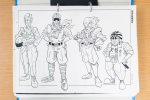
F-Zero Characters and Story: Racers Beyond the Asphalt
F-Zero was not just about futuristic races and breakneck speeds; behind the tracks and anti-gravity vehicles were characters representing each vehicle in the game.
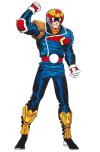
Storyline and Mythology
The F-Zero Grand Prix was a legendary competition that attracted pilots from all corners of the galaxy. Each pilot had a personal reason to compete, whether for glory, challenge, or deeper objectives.
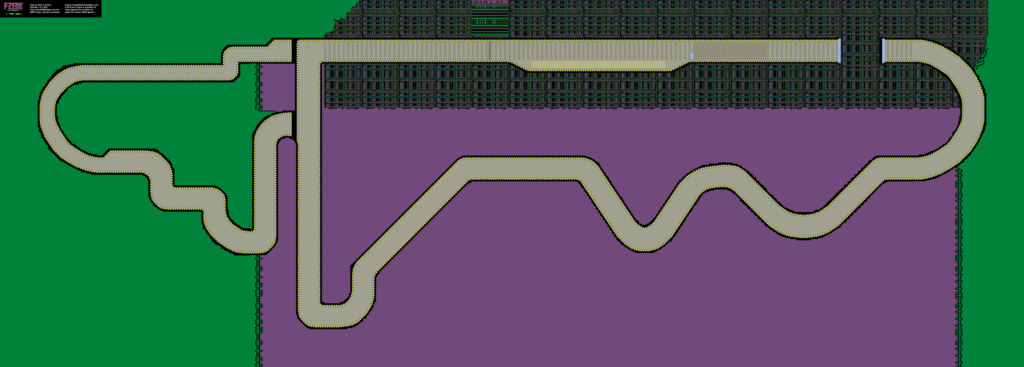
F-Zero Soundtrack and Innovative Audio: Fast Melodies and Futuristic Sounds
F-Zero offered not only a visually thrilling experience but also innovative sound immersion. The soundtrack was iconic in gaming history. Tracks like "Mute City" and "Big Blue" became iconic, perfectly synchronizing with the intensity of the races and elevating the game's excitement. These fast-paced, energetic tracks not only accompanied but also propelled the action, creating a futuristic and urgent atmosphere.
In addition to music, F-Zero featured innovative audio effects. From the distinct sounds of vehicle engines to collision and skidding effects, each sound was designed to enhance immersion. Sound effects were synchronized with moving graphics, changing as players took turns or climbed ramps, amplifying the sensation of speed and movement. Thus, the combination of the pulsating soundtrack and meticulously designed audio effects not only accompanied but also enhanced the gaming experience, setting a new standard for audio integration in games of that time.
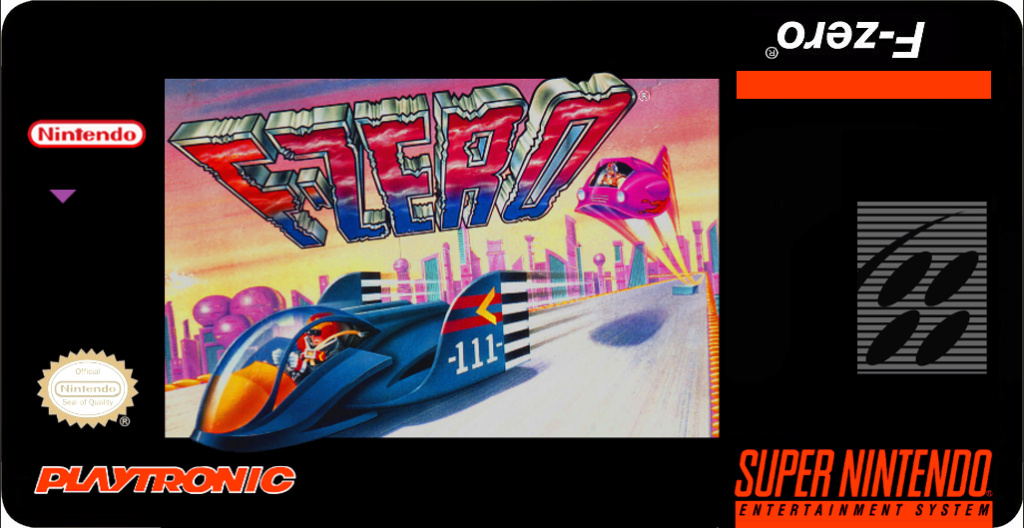
Legacy and Cultural Impact of F-Zero
F-Zero is not just a game; it is a franchise that has left its mark on the gaming industry and pop culture, continuing to inspire players and developers over the decades. The game set a standard for future racing games, introducing graphical and gameplay innovations that defined a new norm in the industry. F-Zero's innovative approach to graphics, especially with the revolutionary use of Mode 7, guided the evolution of racing games, encouraging the industry to explore new technologies and enhance the player experience.
Furthermore, F-Zero characters, especially the iconic Captain Falcon, transcended the world of video games, appearing in various media and other Nintendo games like the Super Smash Bros. series. The catchphrase "Falcon Punch!" became a popular meme in the gaming community, further solidifying its cultural presence. F-Zero's influence also extends to other Nintendo franchises, especially in racing games like Mario Kart, where elements such as dynamic track design and distinct characters were inspired by F-Zero's legacy.
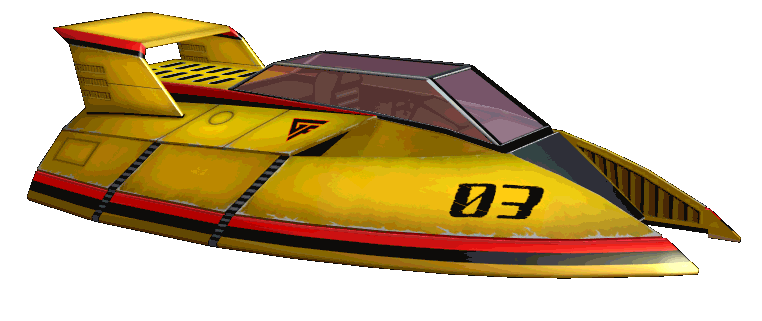
Conclusion: F-Zero - A Journey Beyond Limits
Inspired by science fiction, the development team created a racing experience that dazzled with its revolutionary graphics. Mode 7 technology, coupled with a great soundtrack, set standards for future racing games and opened new horizons for the industry.
There were two updates for F-Zero released only in Japan using the Satellaview add-on for the Super Famicom. With it, players could download titles via satellite and save them on a flash ROM cartridge for temporary playback.
These updates were named BS F-Zero Grand Prix and BS F-Zero Grand Prix 2 in the mid-1990s.
The F-Zero GP Legends anime was released in 2003 by TV Tokyo, where 51 episodes aired. It's worth checking out as it is a very interesting and well-made anime.
When gameplay and level design are good, some games remain fun regardless of their age, and this applies perfectly to F-Zero, not just to it but also to other sequels in the franchise like F-Zero X and F-Zero GX, with the latter, in my opinion, being the best futuristic racing game ever made.
Hugs to everyone and until next time.
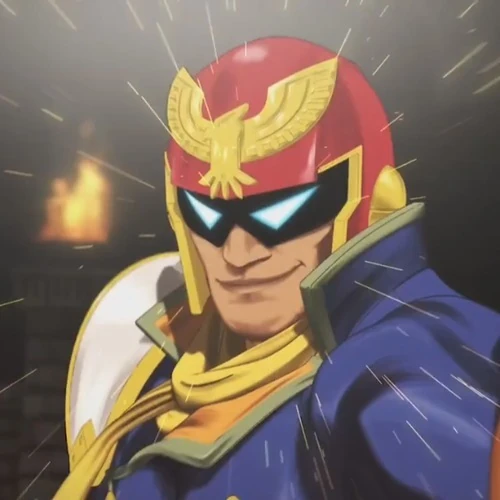

Let's explore the origins of a 16-bit classic, one of the launch games for the Super Nintendo, the great F-Zero, getting to know its influences, development, and its legacy.
The game utilized Mode 7 technology, a technique that allowed real-time rotation and scaling of backgrounds, creating an unprecedented sense of depth and three-dimensionality in racing games of that era. Many games in the SNES catalog used this technology, such as Axelay - with effects like flying over a globe and enemies in the background; Pilot Wings - soaring to dizzying heights, and Mario Kart, which originated from an attempt to create a multiplayer F-Zero, but due to the impossibility of maintaining a split screen with the same speed as F-Zero, gave birth to another franchise.


In the 1990s, Nintendo sought to innovate with the Super Nintendo (SNES). Director Isshin Shimizu was creating a sequel to the game Famicom Grand Prix: F1 Race, but the game received heavy criticism, being deemed uninteresting and unsellable. This motivated Shimizu to create something truly impressive. While traveling to the United States, he drew inspiration from Batman comics, which were popular due to the 1989 film directed by Tim Burton, as well as movies like "Blade Runner" and "Tron".


Upon returning to Japan, Shimizu found Yasunari Nishida, who was experimenting with the "Mode 7" function of the Super Famicom, allowing real-time rotation and scaling of graphics. Shimizu was impressed with the technology and began creating a racing game using this functionality.
Thus, the idea for F-Zero was born. Set in 2560, the game was released in November 1990 and impressed players with innovative graphics and an immersive soundtrack. The vision for F-Zero was to create something entirely unique, with intergalactic races in alien landscapes and anti-gravity vehicles. The choice of a futuristic setting allowed the team to explore imaginative designs inspired by science fiction and advanced technology.


Development and Creative Team
The development of F-Zero was led by Shigeru Miyamoto, who played a crucial role in bringing out the best from his team. Skilled designer Hideki Konno developed challenging track layouts and anti-gravity vehicles with unique characteristics.
View attachment F-ZeroMap01MuteCity1.png
Revolutionary Technology and Technical Limits
F-Zero was a technological innovation for the Super Nintendo (SNES), standing out for its revolutionary use of Mode 7 technology. While other games used simple scrolling techniques, F-Zero offered a dynamic and immersive visual experience, with smoothly rendered undulating tracks. The intensive use of Mode 7 required a balance between graphical details and performance to avoid overloading the hardware.

F-Zero Characters and Story: Racers Beyond the Asphalt
F-Zero was not just about futuristic races and breakneck speeds; behind the tracks and anti-gravity vehicles were characters representing each vehicle in the game.
- Captain Falcon: The game's protagonist, he was not just a skilled pilot but also a renowned bounty hunter. His pursuit of justice and mysterious charm captivated players. The aura of mystery surrounding Captain Falcon transformed him into a gaming icon, both as a pilot and a character.
- Dr. Stewart: This speed-loving doctor dedicated his life to both caring for others and F-Zero races. His charisma and piloting skills made him a fan favorite, showing there was more to his character than just speed.
- Samurai Goroh: A rival of Captain Falcon, Samurai Goroh was a determined pilot with a history of intense rivalry. His quest for victory against Captain Falcon added an element of fierce competition to the game, making him a memorable character.
- Pico: An assassin and former soldier from the Special Anti-Aircraft Unit, he was an extremely aggressive and cold-hearted pilot. His appearance and unique abilities made him one of the most distinct characters in the game.

Storyline and Mythology
The F-Zero Grand Prix was a legendary competition that attracted pilots from all corners of the galaxy. Each pilot had a personal reason to compete, whether for glory, challenge, or deeper objectives.

F-Zero Soundtrack and Innovative Audio: Fast Melodies and Futuristic Sounds
F-Zero offered not only a visually thrilling experience but also innovative sound immersion. The soundtrack was iconic in gaming history. Tracks like "Mute City" and "Big Blue" became iconic, perfectly synchronizing with the intensity of the races and elevating the game's excitement. These fast-paced, energetic tracks not only accompanied but also propelled the action, creating a futuristic and urgent atmosphere.
In addition to music, F-Zero featured innovative audio effects. From the distinct sounds of vehicle engines to collision and skidding effects, each sound was designed to enhance immersion. Sound effects were synchronized with moving graphics, changing as players took turns or climbed ramps, amplifying the sensation of speed and movement. Thus, the combination of the pulsating soundtrack and meticulously designed audio effects not only accompanied but also enhanced the gaming experience, setting a new standard for audio integration in games of that time.

Legacy and Cultural Impact of F-Zero
F-Zero is not just a game; it is a franchise that has left its mark on the gaming industry and pop culture, continuing to inspire players and developers over the decades. The game set a standard for future racing games, introducing graphical and gameplay innovations that defined a new norm in the industry. F-Zero's innovative approach to graphics, especially with the revolutionary use of Mode 7, guided the evolution of racing games, encouraging the industry to explore new technologies and enhance the player experience.
Furthermore, F-Zero characters, especially the iconic Captain Falcon, transcended the world of video games, appearing in various media and other Nintendo games like the Super Smash Bros. series. The catchphrase "Falcon Punch!" became a popular meme in the gaming community, further solidifying its cultural presence. F-Zero's influence also extends to other Nintendo franchises, especially in racing games like Mario Kart, where elements such as dynamic track design and distinct characters were inspired by F-Zero's legacy.

Conclusion: F-Zero - A Journey Beyond Limits
Inspired by science fiction, the development team created a racing experience that dazzled with its revolutionary graphics. Mode 7 technology, coupled with a great soundtrack, set standards for future racing games and opened new horizons for the industry.
There were two updates for F-Zero released only in Japan using the Satellaview add-on for the Super Famicom. With it, players could download titles via satellite and save them on a flash ROM cartridge for temporary playback.
These updates were named BS F-Zero Grand Prix and BS F-Zero Grand Prix 2 in the mid-1990s.
The F-Zero GP Legends anime was released in 2003 by TV Tokyo, where 51 episodes aired. It's worth checking out as it is a very interesting and well-made anime.
When gameplay and level design are good, some games remain fun regardless of their age, and this applies perfectly to F-Zero, not just to it but also to other sequels in the franchise like F-Zero X and F-Zero GX, with the latter, in my opinion, being the best futuristic racing game ever made.
Hugs to everyone and until next time.

